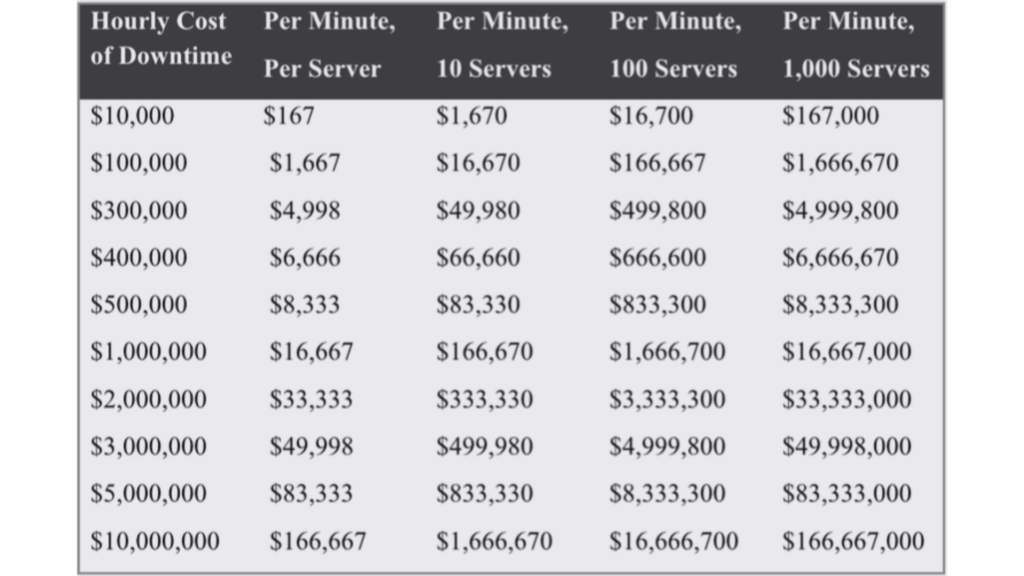
MASTERING CLOUD DOWNTIME
Best Practices For Detection, Response, And SLA Recovery

Let’s Dive In
Hey There, Tech Leaders
The topic, while not glamorous, is crucial for maintaining your cloud infrastructure’s reliability and keeping your business running smoothly: handling cloud outages and getting those all-important SLA credits.
Cloud outages are inevitable, even for the biggest names in the industry. They can occur due to various reasons, including hardware failures, software bugs, network issues, or even natural disasters. When these outages happen, they can disrupt your operations, leading to potential losses and frustration. For a detailed explanation of common causes of cloud outages, check out this PhoenixNAP article.
Observing and Detecting Cloud Downtime
To handle cloud outages effectively, you first need to detect them promptly. Here are some best practices:
- Use Monitoring Tools: Implement comprehensive monitoring tools like Datadog to keep an eye on your network performance and detect outages quickly. These tools can alert you in real-time when something goes wrong.
- Set Up Alerts: Configure alerts for critical metrics that impact your service delivery. This ensures you’re immediately notified of any issues that could lead to downtime.
- Regular Audits: Perform regular audits of your cloud infrastructure to identify potential vulnerabilities and mitigate risks before they cause an outage (The Enterprisers Project) (BMC).


Best Practices for Handling Outages
When an outage occurs, the following steps can help mitigate its impact:
- Activate Incident Response Plans: Have a well-documented incident response plan in place. This should include roles and responsibilities, communication protocols, and a step-by-step guide to resolving the issue.
- Communicate Transparently: Keep your stakeholders and customers informed about the outage, what you’re doing to fix it, and how long it might take. Transparency can help maintain trust even during downtime.
- Post-Incident Review: After resolving the outage, conduct a post-incident review to understand what went wrong and how to prevent it in the future (Yoroflow Blogs | Yoroflow).
Claiming SLA Credits
Most cloud providers offer SLA credits if they fail to meet the agreed service levels. Here’s how to claim these credits:
- Document Everything: Keep detailed records of the outage, including timestamps, affected services, and the impact on your operations. This documentation is crucial for substantiating your claim.
- Review Your SLA: Understand the terms of your SLA. Different providers have different criteria and processes for claiming credits. Ensure you meet these requirements. You can learn more about SLA terms from BMC Software.
- Submit a Claim: Follow your provider’s process for submitting a claim. This usually involves filling out a form and providing evidence of the outage and its impact.
- Follow Up: Stay on top of your claim by following up with your provider. Persistence can pay off if your initial claim is delayed or disputed (The Enterprisers Project) (BMC) (Yoroflow Blogs | Yoroflow).
Pro Tips for SLA Management
To ensure you’re always ready to handle outages and claim SLA credits effectively, consider these best practices:
- Create Specific SLAs: Tailor your SLAs to specific services rather than having a blanket agreement. This makes them more manageable and relevant to each service’s unique needs.
- Set Realistic Goals: Ensure your SLA terms are realistic and achievable. Unrealistic SLAs can lead to frequent breaches and undermine your service management efforts.
- Monitor and Review Regularly: Regularly review your SLAs and monitor performance against them. This helps you stay proactive in managing service levels and addressing issues before they escalate (The Enterprisers Project) (BMC).
The Impact of Downtime: Numbers and Charts
Understanding the financial impact of downtime can underscore the importance of effective SLA management. Here are some numbers to consider:
- Average Cost of Downtime: According to the Uptime Institute’s 2023 report, 70% of data center outages cost over $100,000, with 25% costing more than $1 million. For detailed insights, see Uptime Institute’s report.
- Downtime by Industry: The cost of downtime varies significantly by industry. For instance, ITIC’s 2022 survey indicates that 91% of enterprises experience hourly downtime costs exceeding $300,000, with some reaching up to $1 million per hour. More on this can be found in ITIC’s survey.
To visualize this, let’s look at a chart depicting the average cost of downtime:

These figures highlight the critical need for robust SLA management and quick action during outages.
By following these steps and best practices, you can minimize the impact of cloud outages on your business and ensure you receive the SLA credits you’re entitled to. Stay prepared, stay informed, and keep your cloud services running smoothly!
For more detailed information and best practices, check out resources from Datadog, BMC Software, and The Enterprisers Project.

Never Settle For Downtime, Get Cloud Confidence!